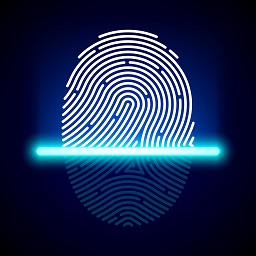What you need to know about dactyloscopy and genome registration of citizens Printable version
Last update: 15.02.2024
On January 1, 2021, the Law "On Fingerprinting and Genomic Registration" (hereinafter: Law) in regard to genomic registration came into force. The provisions of the Law related to fingerprinting came into force on January 1, 2024.
The purpose of the Law is to establish the legal basis for confirming and identifying a person's identity based on fingerprint and genomic information.
The variety of situations occur (fires; plane crashes with numerous victims having different injuries; discovery of unidentified corpses; biological traces from unsolved crimes; missing of people) when it is impossible to establish or confirm a person's identity.
Availability of fingerprint and genomic information in the relevant databases will make it possible to exclude the facts of illegal registration, protect documents from forgery and document owners from fraudulent and other criminal acts, and facilitate the procedure of identity documents restoration.
Fingerprinting
Fingerprint information refers to biometric data on structural features of papillary patterns of fingers or palms of a person's hands or an unidentified corpse, which helps to establish a person`s identity and get personal data.
The citizens of the Republic of Kazakhstan undergo fingerprinting on a voluntary basis.
Fingerprints of citizens of the Republic of Kazakhstan who have undergone fingerprinting are recorded to the chip in biometric passports and identity cards.
All the citizens of the Republic of Kazakhstan, except children under the age of 12 can undergo fingerprinting. For children aged twelve to sixteen, fingerprinting is carried out upon their consent in the presence of a child's legal representative and based on a written application.
There is no need to change documents in 2024 as they will be valid until the end of term.
The following categories are subject to mandatory fingerprinting:
- Foreigners and stateless persons applying for a temporary or permanent residence permit in the Republic of Kazakhstan;
- Foreigners and stateless persons who applied for a residence permit of a foreigner in the Republic of Kazakhstan or a certificate of a stateless person for the first time or for its restoration/replacement;
- Foreigners and stateless persons applying for the asylum seeker status; refugee certificate and (or) a travel document for the first time or for its restoration/replacement;
- Foreigners and stateless persons subject to expulsion from the Republic of Kazakhstan or subject to international readmission agreements ratified by the Republic of Kazakhstan;
- Foreigners and stateless persons obtaining visas of the Republic of Kazakhstan.
Based on the statement issued by a medical consultative board, persons with physical disabilities excluding the possibility of fingerprinting as well as persons who lack all fingers or hands on both hands are not subject to fingerprinting.
Genomic registration
Genomic information is encoded information about certain fragments of deoxyribonucleic acid of a person or an unidentified corpse that allows establishing an identity and personal data (if available).
The genomic database is to be established to prevent crimes and identify the dead.
Persons convicted of certain types of crimes and unidentified persons whose biological material was seized during investigative actions and unidentified corpses are subject to DNA data collection.
Relatives of missing citizens will be able to provide genomic information on a voluntary basis upon written consent. Collection of such information is entrusted to the Internal Affairs Department with participation of DNA laboratories, judicial and forensic medical examination bodies of the Ministry of Justice.
The process will only include obtainment of buccal epithelium (saliva) from the inner sides of the cheeks.
In most cases, the state intends to store the received genomic information or genomic profile for 25 years from the date of collection.
The following categories are subject to genomic registration:
- persons convicted of committing criminal offenses;
- persons convicted of committing grave or extremely grave offences, as well as offences provided for in articles 120, 121, 122, 123 and 124 of the Criminal Code of the Republic of Kazakhstan;
- unidentified persons whose biological material was seized during a pre-trial investigation under unsolved grave or extremely grave offences, as well as all categories of criminal offenses against sexual integrity and sexual freedom of an individual;
- biological relatives of missing citizens, first of all, parents (parent) and (or) children (child), and in their absence, other biological relatives, depending on the degree of kinship;
- unidentified corpses.
Responsibility for refusal to undergo fingerprinting and genomic registration
- Refusal of foreigners or stateless persons to undergo mandatory fingerprinting entails administrative expulsion from the Republic of Kazakhstan.
- Refusal of citizens of the Republic of Kazakhstan, foreigners or stateless persons to undergo mandatory genomic registration entails a fine in the amount of 5 MCI.
- Evading the genomic registration by a person sentenced to probation entails liability provided for in Article 176 of the Criminal Code up to the cancellation of suspended sentence.




